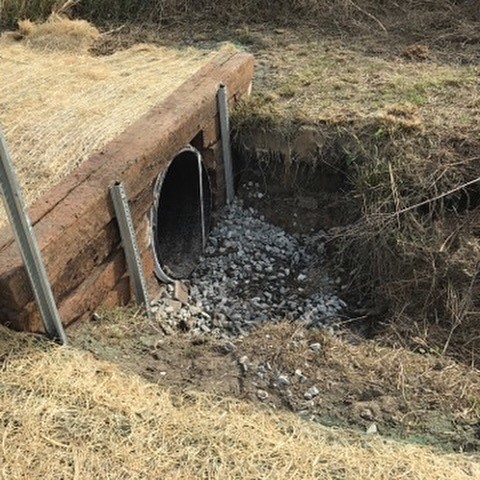Achieve Success With Culvert Installation: Ideal Practices Disclosed
Mounting culverts is a crucial element of facilities development, needing accuracy and adherence to best methods for long-lasting success. Whether embarking on a brand-new job or maintaining existing culverts, the process needs thorough interest to information. From the initial material option to the final phases of upkeep, each step plays a critical role in the performance and longevity of the culvert system. In this conversation, we will discover important techniques, tips, and standards that can substantially impact the outcome of culvert installments. Recognizing these crucial aspects is critical in making sure the structural integrity and performance of culverts, making it crucial for experts and enthusiasts alike to grasp these fundamental concepts.
Proper Material Option

Concrete culverts are known for their strength and resilience, making them suitable for rush hour areas and big water circulation quantities. Corrugated steel culverts are light-weight and simple to install, suitable for momentary applications or circumstances calling for a fast service. Plastic culverts are light-weight, corrosion-resistant, and cost-effective, making them a popular choice for various culvert installations. Compound materials provide a combination of properties from different products, giving a personalized option for details job demands. Inevitably, choosing the appropriate product is important to make sure the culvert system works properly and has a long life span.
Site Preparation Tips
Efficient website preparation is essential for the effective installation of culverts, ensuring correct integration with the surrounding setting and long-lasting capability. Before beginning the installation process, it is crucial to carry out a thorough website assessment to establish the ideal dimension, type, and positioning of the culvert. Clearing the location of any type of particles, plants, or blockages is the initial step in website preparation. This makes sure a clean and level surface for the culvert to be installed.
Next, the soil conditions ought to be reviewed to analyze the stability and load-bearing capacity of the ground. Depending upon the soil type, additional measures such as compaction or support might be required to avoid working out or shifting of the culvert over time. Correct drainage factors to consider need to also be considered to avoid water buildup around the culvert, which can bring about disintegration or architectural damage.
Last but not least, developing appropriate access to the website for construction equipment and guaranteeing conformity with any governing needs are vital facets of site prep work. By complying with these site preparation suggestions, the installation here are the findings of culverts can be performed successfully and properly, promoting the long life and performance of the culvert system.
Installment Methods

First of all, it is essential to accurately gauge and mark the area where the culvert will certainly be installed. This makes certain appropriate placement and protects against any kind of mistakes during the installment stage. Second of all, excavation ought to be done carefully to produce a steady structure for the culvert. The trench ought to be dug to the appropriate depth and width, taking into account the dimension and kind of culvert being set up.
Correct positioning is critical for the functionality and durability of the culvert. By adhering to these installation strategies carefully, the culvert will be properly set up, contributing to the total success of the task.
Upkeep Standards
After completing the careful installment of culverts following proper techniques, adherence to maintenance guidelines is vital to guarantee their durability and functionality. Normal assessment is critical to determine any type of indicators of wear, blockages, or architectural damage early. Inspections should include checking for debris have a peek at this site build-up, disintegration around the culvert edges, and any indications of corrosion or rust. Clearing up particles, such as branches or leaves, from the inlet and outlet on a regular basis is vital to stop blockages that could cause flooding.
In addition, maintaining proper incline and alignment of the culvert is vital for effective water flow and to avoid prospective obstructing. Road construction. Any kind of greenery near the culvert need to be managed to prevent root invasion and obstructions. In locations prone to freezing temperature levels, executing winter months upkeep methods such as ensuring correct drainage to stop ice build-up is important
Normal maintenance not only expands the lifespan of culverts however also a knockout post ensures they function properly in taking care of water flow, reducing the risk of damages to infrastructure and bordering areas.
Troubleshooting Common Issues
Attending to common problems that may develop with culverts needs a methodical strategy and cautious analysis of the underlying causes. One constant trouble run into is obstructions within the culvert, typically triggered by particles build-up or debris accumulation. To fix this issue, regular inspections and maintenance are crucial to guarantee correct performance. Additionally, improper installation bring about misalignment or insufficient slope can result in water circulation disturbances and even structural damage. By inspecting the culvert positioning and slope regularly, potential problems can be recognized and corrected quickly.

Conclusion
In verdict, achieving success with culvert setup requires mindful consideration of product choice, detailed site prep work, appropriate setup methods, and routine upkeep. By adhering to best methods and repairing typical issues, the honesty and performance of culverts can be made sure. It is necessary to comply with standards and recommendations to avoid any kind of potential issues and ensure the longevity of the culvert system.